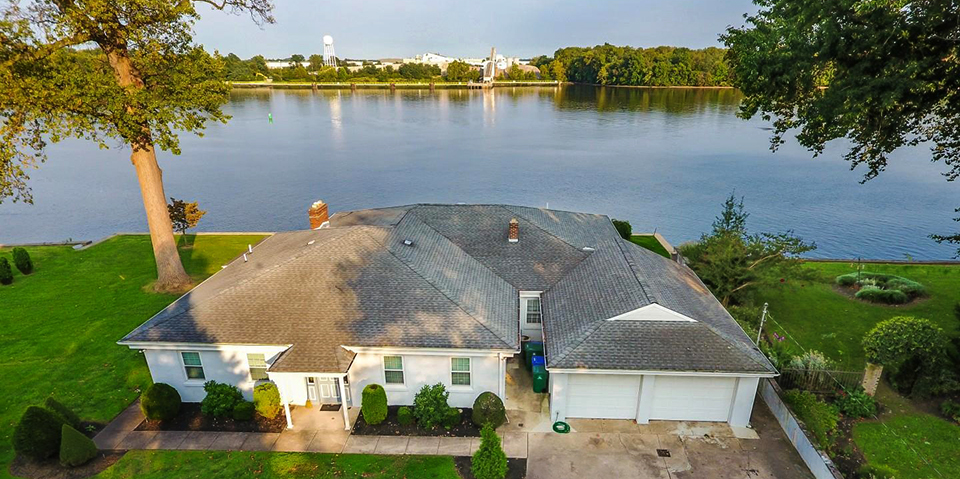

Bristol Township municipal offices are located at 2501 Bath Road, Bristol PA 19007.
Phone: 215‑785‑0500.


Neighborhoods
History [1]
The township's early development dates to William Penn's settlement of the area. In 1686, the Provincial Council ordered the construction of the King's Highway from Philadelphia to Morrisville via Bristol, following the route of an Indian trail which had been in use by the colonists since before 1677. Beginning in 1804, the Bristol and Frankford Turnpike (Bristol Pike) was built on the bed of this road. Bristol Pike is now known as U.S. Route 13. The north-south roads in the township were originally part of a rectangular system of roads laid out by William Penn in lower Bucks County. By the mid-1800s, many of the major arteries which serve the township today were in existence.
During and after colonial times, roads were generally poorly paved and difficult to use, so most traffic was water borne. The Delaware River was the most important route until the Delaware Division Canal was opened in 1830. This canal ran from Bristol to New Hope and on to Easton, where it connected to the Lehigh Canal. Coal from the Pennsylvania anthracite mines was brought by canal barge to Bristol where it was transferred to ships bound for Philadelphia or New York.
The industrialization of Bristol Township and adjacent Bristol Borough began in 1701 with the construction of the Bristol Mills. Silver Lake, then called Mill Pond, provided water power to run the mills. After the Revolutionary War, the mineral waters at Bath Springs, then just inside the township boundaries, became popular. Bath Springs was the most fashionable watering place in America until 1821 when it was eclipsed by the newly opened spas at Saratoga.
In the early 19th century, small settlements appeared in various parts of the township: Centerville (Emilie), Newportville (laid out in 1808 at the head of navigation on the Neshaminy Creek, the township's western boundary), and Tullytown (founded in 1816 on the boundary between Bristol and Falls Townships). The last became a separate borough in 1891. The Trenton-Philadelphia Railroad, now part of the main Philadelphia-New York line of Amtrak/Conrail was completed in 1835. This railroad and the Delaware and Raritan Canal, built from New Hope to the vicinity of New York City, eventually drew all coal traffic from the New Hope-Bristol Canal and from the port of Bristol.
These transportation systems helped the growth of Bristol Borough but had little effect on the township, which had an economy based on agriculture until the Second World War. Most of the land was used for farming. Tobacco raising reached a peak in 1871. Several fisheries were active in the late 18th and most of the 19th centuries. The largest of these, Badger's, south of Bristol, began operations in 1790.
Landreth's seed farm, in the Bloomsdale area of the township, established in 1784 on 540 acres between Bristol and Edgely, was one of the largest seed producing establishments in the world in the 18th century.
From about 1900 to the early 1920s, a number of interurban trolley lines ran through the township. One went from Trenton to Torresdale via Bristol and Croydon, another from Doylestown to Bristol through Morrisville, a third from Langhorne to Bristol, and a fourth between Newtown and Bristol. It was during this time period that the township's largest industry, Rohm and Haas, began to expand its industrial plant and operations from Bristol Borough into Bristol Township.
With the provisions of commuter service on the railroad and the establishment of these trolley lines, parts of the township became more accessible to Philadelphia and other urban areas, and as a result development increased slightly.
Edgely grew up in the late 19th century around a commuter stop of the Pennsylvania Railroad. Croydon, related to another commuter station, was closer to Philadelphia and grew fairly rapidly. Summer and year-round homes were built along the Neshaminy and in Fergusonville. Nevertheless, growth was slow. The population increased by only 3,373 persons in 120 years—from 1,008 in 1810 to 4,381 in 1930.
In 1940, fewer than 2,000 housing units existed in Bristol Township. These units included farmhouses and summer and year-round, single-family houses in Croydon, West Bristol, Fergusonville, Newportville, Edgely, and other areas generally in the southern and central portions of the township.
During the 1940s, approximately 1,665 additional housing units were constructed, many for World War II workers in the area. At the same time, major expansion at the Rohm and Haas plant occurred to meet wartime needs for chemical and plastic products.
In the early 1950s, a crucial event occurred. U.S. Steel commenced construction of the Fairless steel mill in adjacent Falls Township. As a result of this major industrial development and the post-World War II building boom, a new era of residential subdivision began in Bristol Township.
Between 1950 and 1954, some 9,000 housing units were constructed and occupied, with another 3,000 units being constructed from 1955 to 1960. Approximately 65 percent of the township's 1980 total housing units were constructed in the decade of the 1950s. Although "Levittown" was by far the largest residential subdivision to be constructed during the decade, there were many others, ranging in size from some 400 homes in Croydon Acres to a dozen homes in Bath Manor, Maple Shade, and other residential subdivisions.
By 1970, the township's population reached its maximum of 67,498 persons. However, the loss of major industries in the township and the surrounding region, which employed many of the township's residents through the 1970s and 1980s, led to an out-migration of the working-age population and a reduction in family size in the township.
Nearby Towns: Bensalem Twp • Beverly City • Bristol Boro • Burlington City • Burlington Twp • Delanco Twp • Edgewater Park Twp • Falls Twp • Florence Twp • Hulmeville Boro • Langhorne Boro • Langhorne Manor Boro • Levittown • Lower Makefield Twp • Middletown Twp • Morrisville Boro • Penndel Boro • Riverside Twp • Tullytown Boro • Willingboro Twp •